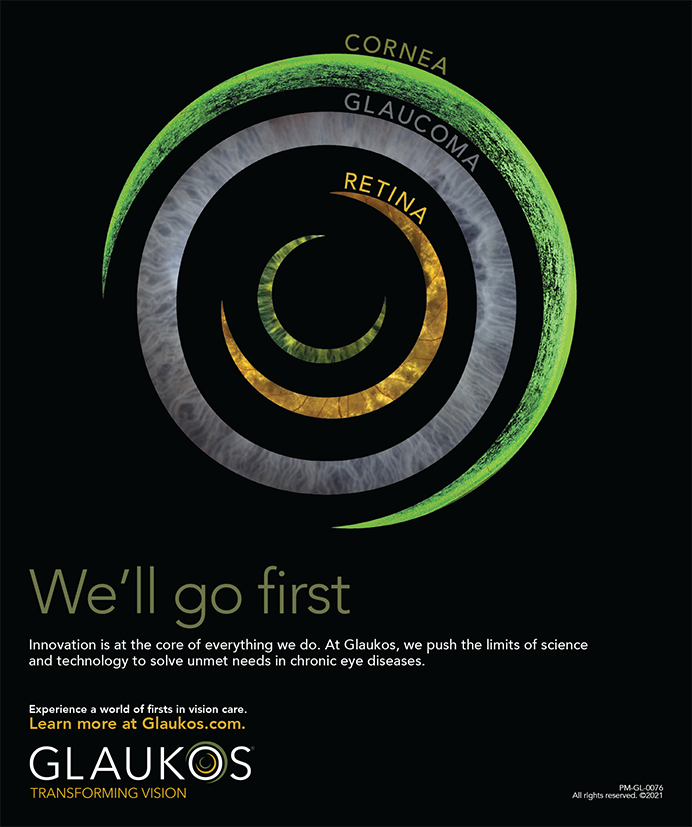How did you develop the concept for your Tetraflex IOL?
I had the privilege of being a close associate of Charles Kelman, MD, and was influenced by his four criteria for the ideal IOL. When I arrived at the Tetraflex design, it was a eureka type of situation. It allowed me to successfully meet all of Kelman's criteria. Years ago, surgeons talked about the capsulorhexis, cortical hydrocleavage, and phacoemulsification. Now, being able to potentially address perhaps the most frustrating condition that patients experience (eg, the inability to accommodate) is making all the bells ring for me. The design evolved first with the phakic lens and then the aphakic accommodative lens. Ultimately, I always kept Kelman's principles for the ideal IOL in mind, because he has been my mentor as well as that of most ophthalmologists. We are completely indebted to him. His loss is irreparable, but his contributions are unforgettable.
What role did Lenstec play in the development of the Tetraflex?
I needed the savvy of a lens manufacturer and its engineers to see how the Tetraflex would work clinically. When I showed the drawings to John Clough, President and CEO of Lenstec Inc., he declared the concept feasible. We went forward with the prototypes and began producing the phakic lens. However, I realized that the dynamics of placing the phakic lens in the capsular bag might complement the haptic design and possibly achieve some degree of accommodative effect. As of late, I am cautiously optimistic about the way the Tetraflex lenses are taking off. Nearly 1,000 lenses have been implanted, and not one has had to be removed. We are about to start FDA trials and I am putting all of my energies toward that. Although my lens is the antithesis of the Crystalens with an entirely different design, both of the lenses work. We have not solved the mystery of accommodation, but the progress we are making is encouraging.
How did your hobby of writing plays evolve? I began by writing a novel entitled The Implant, which had an espionage basis. Information was encoded onto an IOL that was implanted in the eye of a communist chairman in Russia. After I discovered that I enjoyed and had a talent for writing dialogue, I decided to try writing a play. Having spent so many years as an ophthalmologist caring for patients, I have developed a knack for remembering the way people speak, how they act, and how they verbalize their emotions and stories. My first script was Tenement Echoes, and I followed it with Past Perfect, a drama. Next, I lightened up with a comedy, The Personal Trainer. However, I have put playwriting aside for awhile. The plays are just there for me to dust off when I want to stroke that side of my brain.
Tell us about your interest in foreign languages. I think that some people have a neuropathway that increases their aptitude for learning languages. So, I take no credit for my ability to speak languages. When I practiced at the New York Eye and Ear Infirmary, I treated many Spanish-speaking patients, and I was frustrated with needing a translator. As a result, I bought an instructional book and taught myself the language. French and Italian are among the other languages I have picked up. I can shift my brain into it. The truth is, I do not agonize about whether it comes out clearly. For me, it is simply conversational language that I find exciting, so I embrace it. My knowledge of various languages has come in handy, as ophthalmology is such a congenial profession. I have brilliant colleagues from around the world. The camaraderie and the degree to which the skills-transfer mechanism takes place at all levels of the field astound me. Furthermore, people really applaud your effort when you try to speak their language, and they become sincerely interested in what you are doing. The effort helps you respect each other as physicians and enjoy one another as human beings.
With such a broad spectrum of interests, how did you decide on a career in ophthalmology? I always knew that I wanted to be in medicine, but I did not know which specialty. In medical school, I asked myself one question: what would you rather be than blind? Think about that question. Invariably, the answer is, “anything.” That really resonated with me. Additionally, ophthalmology offers the opportunity to perform neurology, pediatrics, and surgery; the specialty touches all of those areas. Its ultimate appeal is the precious gift of sight, however. Its preservation was, and still is, my motivation.


